According to the United States General Services Administration, the legal industry accounted for over $330 billion in revenue in 2019. This is encouraging for those who are considering opening a new firm. Ensuring the financial success of a law firm, however, requires careful planning. Law firm profitability models help new law firms develop sound business plans that will help maximize their profits. Existing firms can also use these models to make profitable changes when restructuring. While venturing into the world of law firm profitability models can be intimidating at first, working knowledge of the fundamental metrics can help boost productivity and profitability. At 3Sixty Consulting Group, our law firm consultants offer professional guidance on profitability diagnostics and a variety of other consulting services. Consider calling (404) 398-3888 to learn more about how we can help your firm.
What Are the Most Important Profitability Metrics for a Law Firm?
An existing law firm that is looking for ways to improve profitability can gain a deeper understanding of their firm’s current profitability by measuring a few key metrics, including:
- Utilization Rate—This metric measures the percentage of a lawyer’s billable hours in relation to his or her overall time spent working. A lawyer who works 3000 hours with 2000 billable hours during the year would have a 66-percent annual utilization rate.
- Realization Rate—The realization rate measures the number of billable hours an attorney records versus the fees that they collect. A lawyer who records 1000 billable hours but only receives payment for 750 would have a 75 percent realization rate.
- Cost Allocation—Assigning personnel and overhead cost to clients and matters give a great indication on profitability. Many times, areas that are not leveraged properly cause the firm to absorb costs on behalf of staff mismanagement on a matter. Properly allocating cost to a client and matter is imperative to gain an accurate perspective of profitability.
- Outstanding Work-in-Process (WIP) Fees—Calculating these outstanding fees can help measure the productivity of both attorneys and billing staff employees. WIP fees is time worked by lawyers but have not yet been invoiced.
- Outstanding Accounts Receivable Balances—Accounts receivable balances are another measurement related to both attorneys and billing staff. High outstanding balances could be a sign of customer dissatisfaction with a lawyer’s services or a sign of poor performance by the billing and collections department. Moreso, it could be a more significant issue such as electronic billing compliance issues and rejections which is becoming more and more of an issue for all law firms.
Once a firm has measured these metrics, they can begin analyzing the numbers and finding areas in need of improvement. Then the firm can construct a plan that will help to address those weaknesses.
How to Use Law Firm Metrics to Improve Profitability
When measuring profitability through the metrics mentioned above, law firms should strive to collect accurate data and properly use the insights gained from this data to make changes that will increase the firm’s profitability. Both realization and utilization should be tracked at weekly, monthly, quarterly, and yearly intervals so that data trends can be established. These trends can then be analyzed for potential areas where profitability could be increased, such as a subpar utilization rate.
The firm’s partners and any consultants can then act based on the trends and the subsequent lessons learned from the data to develop a plan for addressing the issues and implementing solutions to increase profitability. Law firms can learn more about how to use data from law firm profitability models to increase their profits by contacting 3Sixty Consulting Group and its law firm consultants.
Practical Ways to Boost Law Firm Profitability
Major structural changes have become common in law firms throughout the United States. According to the Bureau of Labor Statistics, American law firms have been looking for ways to reduce costs through increased efficiency and consolidated job duties. The right business improvements for a particular law firm will vary depending on several factors, such as the firm’s areas of practice and the size of the local market. However, there are certain best practices that can help increase the profitability of most firms.
Maximize Billable Hours
Discrepancies in billable hours can have a serious impact on the financial bottom line of each lawyer and the firm as a whole. While a lawyer’s job duties may involve non-billable tasks, reducing the amount of time spent on such tasks gives a lawyer more time to focus on billable work, which can increase profitability for the law firm. By delegating unbillable work to paralegals or outsourcing it, attorneys may be free to take on additional clients, bringing in additional revenue for the firm.
Optimize Billing and Collections
An efficient billing and collections department can help to ensure that a law firm’s hours are accurately billed and that the firm receives appropriate compensation for the services provided. Cash flow is a critical aspect of profitability for law firms and most other businesses, so prioritizing this department is key. Law firm profitability data on outstanding accounts receivable or work-in-process fees can indicate a need to improve the operations of this department.
Some common ways to make billing clients and receiving payments easier include:
- Offering credit card and other electronic payment options
- Regularly tracking finances and compiling reports, including reports for aged accounts receivable balances and WIP fees
- Tracking time meticulously to ensure accurate billable hours
- Understanding clients ebilling guidelines and procedures
- Automating the billing process with software
Track Profitability by Partner / Practice Group
One of the best ways to assess profitability within a firm is to look at from a micro level. In other words, how are individual partners or practice groups performing in relation to overall Firm performance and expectations. Are partners monopolizing higher salaried associates on lower valued work? Are practice groups properly leveraged? These are just two of the ways were a profitability analysis could benefit your firm.
Pick a Specialization
In most markets, attorneys can earn more money by focusing on a specific area of practice or group of related practice areas. For example, a law firm that focuses on car accidents may be able to charge a higher fee compared to a general personal injury lawyer with no specific area of focus. Law firms that secure favorable results for their clients in a specific sub-specialization can potentially gain a reputation as experts in that particular area of focus, allowing them to garner a larger share of potential clients in their specialization.
Contact a Law Firm Consultant Group for Professional Law Firm Profitability Model Advice
In order to achieve sustained success as a law firm, it is critical to have an accurate picture of your firm’s profitability and the ability to make improvements using data from law firm profitability models. Many law firms may feel overwhelmed by the idea of making the changes necessary to maximize profitability, as this process can cut into billable hours. However, law firm consultancy groups can help address this concern by handling the process of gathering data, analyzing it, and making the necessary corrections. For more information about increasing law firm profitability and other legal business-related concerns, consider contacting 3Sixty Consulting Group by calling (404) 398-3888.

